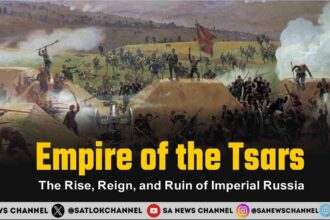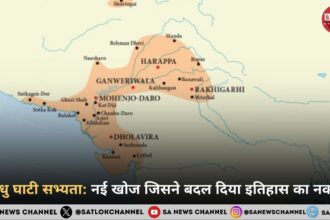The Maya civilization, one of the most advanced and influential ancient civilizations of the Americas, flourished in the dense jungles of Mesoamerica. This civilization, known for its remarkable achievements in architecture, mathematics, astronomy, and writing, has left an indelible mark on history. From their emergence around 2000 BCE to their decline by the 16th century, the Mayans’ history is complex, rich, and mysterious. In this article, we will explore the origins, cultural developments, societal structures, major cities, achievements, and eventual decline of the Mayan civilization.
- Early Beginnings: The Formation of the Maya Civilization (2000 BCE – 250 CE)
- The Classic Period: The Height of the Maya Civilization (250 CE – 900 CE)
- The Collapse of the Classic Maya Civilization (900 CE)
- The Postclassic Period: The Northern Maya Cities (900 CE – 1500 CE)
- The Arrival of the Spanish: The End of the Maya Civilization (1500 CE)
- Legacy of the Maya Civilization
- Spiritual Perspective Maya Spirituality: The Path to Liberation with Sant Rampal Ji
- FAQs about the history of Maya civilization
- What caused the decline of the Maya civilization?
- What were the main achievements of the Maya civilization?
- Where did the Maya civilization exist?
- Did the Maya have a written language?
- Are there still Maya people today?
- Connect With Us on the Following Social Media Platforms
Early Beginnings: The Formation of the Maya Civilization (2000 BCE – 250 CE)
The origins of the Maya civilization are traced back to around 2000 BCE in the region now known as Mesoamerica. The early Maya were hunter-gatherers, but by 1500 BCE, they had begun to settle in permanent agricultural communities. These early settlers practiced agriculture, cultivating crops like maize (corn), beans, and squash, which became the staple foods of their diet. The development of these agricultural techniques laid the foundation for the rise of civilization.
The Maya were not a single unified group but rather a collection of city-states, each with its own government and social structure. By around 1000 BCE, the first major cities began to emerge, marking the beginning of the Preclassic period (also known as the Formative period). These early cities, such as Nakbé and El Mirador in the northern Petén region of Guatemala, were marked by monumental architecture, including large pyramid structures. These early Maya cities were influenced by Olmec culture, which had been established earlier in the Gulf Coast region of Mexico.
■ Also Read: Ancient Civilizations: Here Are The Three Ancient Civilizations
The Preclassic period saw the development of key aspects of Maya culture, including the Maya calendar, the early forms of writing, and the establishment of religious beliefs centered around gods associated with nature and fertility. The period also saw the rise of a class of elites, who ruled over the growing urban centers and accumulated wealth through trade and tribute from surrounding villages.
The Classic Period: The Height of the Maya Civilization (250 CE – 900 CE)
The Classic period of the Maya civilization, spanning from approximately 250 CE to 900 CE, represents the peak of Maya society. During this time, the Maya built some of their most impressive cities, and their culture reached its height in terms of art, architecture, and intellectual achievement. The civilization expanded across the southern lowlands of present-day Mexico, Guatemala, Belize, Honduras, and El Salvador.
The Maya city-states during the Classic period were independent, yet they were interconnected through trade and alliances. The major cities included Tikal, Calakmul, Copán, Palenque, and Caracol. These cities were centers of politics, religion, and culture. They built grandiose pyramids, palaces, and temples, many of which still stand today as a testament to their architectural prowess. The Maya constructed large plazas and ceremonial ball courts, where the game of ball, a significant ritual and sport, was played.
One of the most remarkable achievements of the Maya during the Classic period was their writing system. The Maya developed a sophisticated system of hieroglyphic writing, which was used to record historical events, royal lineages, and religious rituals. The Maya also created codices folded books made of bark paper, that were filled with intricate illustrations and glyphs. These codices are essential sources of knowledge about Maya history and beliefs.
In addition to their writing system, the Maya developed an advanced understanding of mathematics and astronomy. They were among the first civilizations to use the concept of zero, a mathematical innovation that would later be adopted by other cultures. The Maya also created a complex calendar system, which included the famous 260-day ritual calendar (the Tzolk’in) and the 365-day solar calendar (the Haab’). These calendars were used to track the cycles of the moon, sun, and planets and to determine the dates for religious ceremonies.
Maya society was structured around a rigid hierarchy. The king, or “Ajaw,” was considered both a political and religious leader, serving as the intermediary between the gods and the people. The king’s authority was reinforced by elaborate rituals and the construction of monuments commemorating his reign. Below the king were the nobility, priests, scribes, artisans, and farmers, each occupying different levels of the social pyramid.
Religion played a central role in Maya life. The Maya worshipped a vast pantheon of gods, with each god governing different aspects of nature, such as rain, corn, and the underworld. Religious ceremonies, including human sacrifice, were held to appease these gods and ensure the continued prosperity of the society. The Maya believed that the gods had created the world and that it was their responsibility to maintain harmony between the gods and the earth.
The Collapse of the Classic Maya Civilization (900 CE)
By the end of the 9th century CE, the once-thriving Maya cities in the southern lowlands began to experience a gradual decline. The reasons for this decline are still the subject of much debate among scholars, but several factors are believed to have contributed to the collapse of the Classic Maya civilization.
One of the most widely accepted theories is that environmental factors, such as prolonged droughts, played a significant role. The southern lowlands, where many of the great Maya cities were located, are particularly vulnerable to climatic changes. A series of droughts could have disrupted agricultural production, leading to food shortages and a breakdown of social order. This environmental stress may have led to the abandonment of cities and the eventual collapse of civilization in this region.
Another factor contributing to the collapse was internal political instability. As the Maya city-states grew larger and more powerful, they became more competitive and warlike. Frequent warfare between rival cities may have weakened the overall stability of the civilization. The collapse of major cities, such as Tikal and Calakmul, was followed by a fragmentation of the Maya political landscape, leading to the decline of centralized authority.
The Classic period decline did not mark the end of the Maya civilization as a whole. While many cities in the southern lowlands were abandoned, the northern cities, such as Chichen Itza, continued to thrive. The Terminal Classic period (900-1000 CE) saw the rise of new centers of power in the northern Yucatán Peninsula.
The Postclassic Period: The Northern Maya Cities (900 CE – 1500 CE)
Following the collapse of the southern Maya cities, the northern regions of Mesoamerica saw the rise of new Maya centers. Chichen Itza, located in the Yucatán Peninsula, became one of the most important cities of the Postclassic period. Unlike the southern cities, which had relied heavily on agricultural production, the northern cities were more focused on trade and military power.
Chichen Itza was a large and well-organized city, and it became the dominant political and economic power in the northern Maya lowlands. The city’s most famous landmark, the pyramid of El Castillo (also known as the Temple of Kukulkan), is an architectural marvel that aligns with the movements of the sun during the equinoxes.
During the Postclassic period, the Maya civilization saw a shift in religious and political practices. While the southern cities had been ruled by divine kings, the northern cities were often governed by more militaristic leaders who sought to expand their territories through warfare and alliances. Despite this, the Maya continued to practice their traditional religious rituals and developed new forms of artistic expression.
The Arrival of the Spanish: The End of the Maya Civilization (1500 CE)
The arrival of the Spanish in the early 16th century marked the beginning of the end for the Maya civilization. In 1519, the Spanish conquistador Hernán Cortés arrived in Mexico and began his conquest of the Aztec Empire. During the same period, the Spanish began to explore and conquer the Maya territories. The Maya, who had been living in scattered city-states for centuries, faced the overwhelming force of the Spanish colonizers.
The conquest of the Maya was not an instantaneous event. The Maya resisted Spanish rule for decades, engaging in several uprisings and battles. However, by the late 1600s, most of the Maya region had been incorporated into the Spanish colonial empire. The Spanish brought with them diseases, such as smallpox, which devastated the indigenous population. Additionally, the Spanish sought to convert the Maya to Christianity, often destroying their temples and religious texts in the process.
While the Maya civilization as a dominant political and cultural force came to an end, the Maya people themselves did not vanish. Many Maya communities continued to live in the region, preserving their language, traditions, and culture. Today, millions of Maya descendants still inhabit the Yucatán Peninsula, Guatemala, Belize, and other parts of Central America.
Legacy of the Maya Civilization
The legacy of the Maya civilization is profound and far-reaching. Despite the challenges they faced, the Maya made significant contributions to human knowledge, particularly in the fields of mathematics, astronomy, and writing. Their cities, such as Tikal, Palenque, and Chichen Itza, continue to awe visitors with their monumental architecture and intricate carvings. The Maya’s calendar system, which was among the most accurate of its time, has also gained widespread recognition.
The Maya also left behind a rich cultural heritage, including their art, music, and literature. Their descendants continue to celebrate their heritage through festivals, traditional crafts, and the preservation of the Maya language.
In conclusion, the Maya civilization was one of the most advanced and enduring cultures of the ancient world. From their early beginnings as agricultural communities to their achievements in science and the arts, the Maya created a society that was sophisticated, dynamic, and deeply connected to their environment. While the collapse of the Classic Maya civilization remains a subject of debate, their legacy endures in the descendants who continue to carry forward the traditions and knowledge of their ancestors.
Spiritual Perspective Maya Spirituality: The Path to Liberation with Sant Rampal Ji
The spiritual practices of the Maya civilization was deeply connected to nature and the cosmos, with their rituals focused on maintaining harmony with divine forces. However, their understanding of divinity was limited to multiple gods and deities.
The Chyren Sant Rampal Ji’s teachings offer a more precise path to spiritual enlightenment, emphasizing the worship of the one True God for liberation. According to Sant Rampal Ji, true spiritual peace and salvation come from recognizing the soul’s connection with the one Supreme God and following His divine teachings, not through idol worship or incomplete practices.
For the descendants of the Maya civilization, the message is clear: their ancient reverence for the divine can be enriched by embracing the true, complete knowledge of God as revealed by Sant Rampal Ji. This knowledge aligns with their deep spiritual connection, guiding them towards ultimate liberation and a true understanding of the soul’s purpose.
People can reach out to Sant Rampal Ji through:
Official Website: For teachings, events, and resources.
Social Media: Follow on platforms like Facebook, Instagram, YouTube for updates and live satsangs.
Satsangs: Attend physical or virtual gatherings to learn and seek guidance.
Ashrams: Visit Satlok ashrams for direct teachings and spiritual connection.
Helplines: Contact numbers for further assistance and information.
These avenues offer multiple ways to connect with Sant Rampal Ji’s wisdom.
FAQs about the history of Maya civilization
What caused the decline of the Maya civilization?
The decline is attributed to a combination of factors, including environmental challenges like prolonged droughts, political instability, warfare between city-states, and the depletion of natural resources.
What were the main achievements of the Maya civilization?
The Maya made significant contributions in astronomy, mathematics (including the concept of zero), architecture (such as the pyramids), and developed a complex writing system of hieroglyphs.
Where did the Maya civilization exist?
The Maya civilization spanned present-day southern Mexico, Guatemala, Belize, Honduras, and El Salvador.
Did the Maya have a written language?
Yes, the Maya developed a sophisticated writing system using hieroglyphs to document history, royal lineages, and religious rituals. Their codices are invaluable historical resources.
Are there still Maya people today?
Yes, millions of descendants of the Maya still live in the Yucatán Peninsula and other parts of Central America, preserving their culture, language, and traditions.









